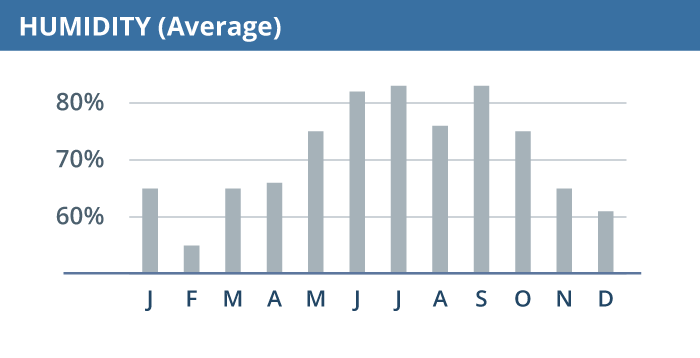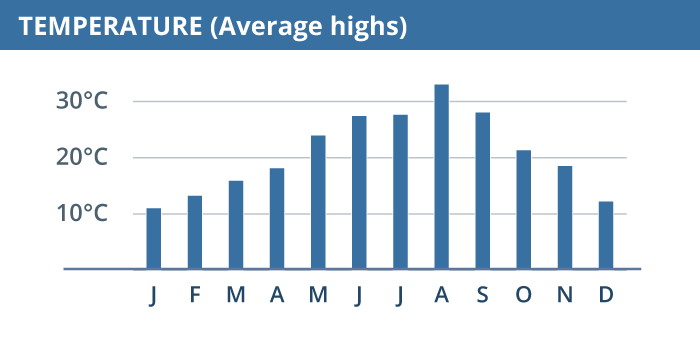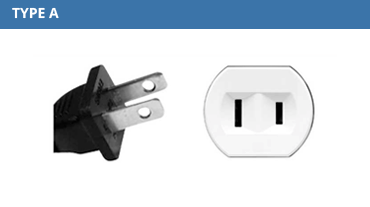GENERAL FAQ
Japan has four distinct seasons, which vary a little depending on the geographical region. Most meetings with client companies take place in and around Tokyo and Osaka; in these areas, spring and autumn are mild and the most pleasant time of year to visit. Winter is not unduly cold, but summer is uncomfortably hot and humid, and best avoided if possible. Here is the Japan Meteorological Agency’s 2022 weather data for Tokyo:


Rain is frequent throughout most of the year, so bringing a foldable umbrella can be handy. Incidentally, Japanese people always use an umbrella when it rains and it will be perceived as odd if you don’t too. Note that UV intensity can reach high levels; in Tokyo, the WHO’s UV index is 8-10 (“very high” category) from April through to August



